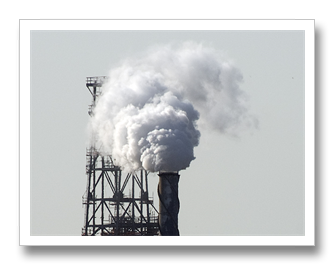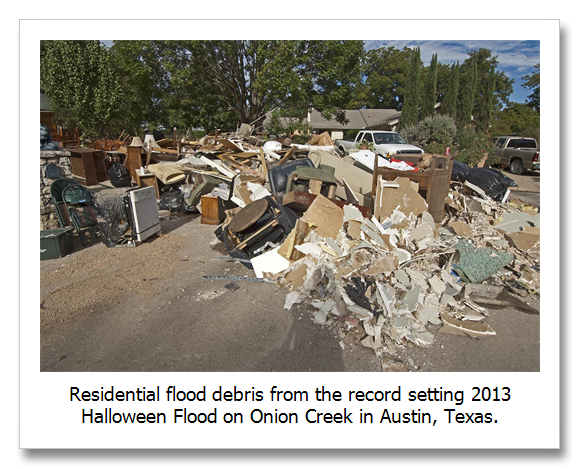The International Monetary Fund (IMF) has completed a new study that accounts fro global fossil fuel subsidies. Highlights of the study are listed below (from the report introduction): Post-tax energy subsidies are dramatically higher than previously estimated—$4.9 trillion (6.5 percent of global GDP) in 2013, and projected to reach $5.3 trillion (6.5 percent of global…

Once again we ask “why has the apparent global temperature lagged behind accelerating CO2 emissions”? The reasons are numerous and logical, yet the media and prominent climate change deniers continue to ignore their significance, if they even understand they exist at all. Cherry picking the beginning point of the so-called hiatus by starting it during…

Work from the Institute for Atmospheric and Climate Science, Zurich, Switzerland has found that about 18% of moderate daily precipitation extremes and about 75% of moderate daily hot extremes, that are currently occurring over land, are attributable to warming. An ensemble of the latest models was used to try and average the individual modeling from…

First published on Truthout.org April 24, 2015. “The best estimate of the human-induced contribution to warming is similar to the observed warming [from 1951 through 2010].” IPCC 2013, Summary for Policy Makers.(1) This statement differs radically from the almost ubiquitous understanding that part of global warming has been caused by humanity and part is natural. In…

First Published on Truthout, April 13, 2015. The Gulf Stream plays an immensely important role in moderating the climate of eastern North America and Europe. Moreover, Greenland melt impacts ocean current processes in the North Atlantic. For years, contradictory research has alternately said the Gulf Stream was slowing and that it was not slowing. The…

From the National Snow and Ice Date Center: “Air temperatures reached record high levels at two Antarctic stations last week, setting a new mark for the warmest conditions ever measured anywhere on the continent. On March 23, at Argentina’s base Marambio, a temperature of 17.4° Celsius (63.3° Fahrenheit) was reached, surpassing a previous record set…
(See more on the Drexel/Stanford research on the climate change counter-movement here.) Merchants of Doubt, A film by Sony Pictures and Robert KennerAustin Premiere and Lecture by Bruce Melton PE Inspired by the acclaimed book by Naomi Oreskes and Erik Conway, MERCHANTS OF DOUBT takes audiences on a satirically comedic, yet illuminating ride into the…

Not an April Fools joke! Warren Business Consulting, Oil and Gas industry specialists, have come out with a climate change poll that not what one would think it is. 474 oil and gas industry insiders completed the poll where 85 percent believe global warming was happening and 58 percent were either very sure or extremely…

The location of this “hole” in the North Atlantic is in a crucial area where Gulf Stream water sinks. This sinking of warm water buries heat and carbon dioxide in the deep ocean in a massive global current that stretches all the way around the tip of Africa to the Eastern and North Pacific. This…

Bolsen, Druckman and Cook have summarized the emerging discipline of global warming psychology rather well with this paper. Scientists and policy makers are more likely to believe than the public and more likely to believe that warming is caused by man. There is political influence in what liberals and conservatives believe about the existence of…
Whatever it has been that has kept the average global temperature from skyrocketing along with greenhouse gas concentrations is likely being overwhelmed. Of most significance is an unprecedented hot spot in the North Pacific that has probably signaled an end to the current cool phase of the Pacific Decadal Oscillation. Last summer’s global sea surface…
The National Snow and Ice Data Center (NSIDC) report on March 19, 2015 shows Arctic sea ice has reached its lowest winter minimum on record. The record only goes back to 1979, but conclusions can be drawn from the record and global temperature that show global warming at work. This interactive chart is the NSIDC…
The American Association for the Advancement of Science (AAAS), the world’s largest general scientific organization that produces the academic journal Science, has just begun a new open publishing journal; Science Advances (no paywall!). Their first issue includes a paper titled: Unprecedented 21st century drought risk in the American Southwest and Central Plains. Produced by researchers…
From the National Snow and Ice Data Center Website for March 4, 2015. There were four warm temperature state records set in February but surprisingly, no record cold state temperature records were set. There were 13 near-record cold state temperatures (2nd through 5th coldest) and three near-record warm state records (2nd and 3rd warmest). http://nsidc.org/arcticseaicenews/2015/03/possibly-low-in-the-north-definitely-high-in-the-south/…

First published on Truthout, March 5, 2015. Greenland is warmer than it has been in more than 100,000 years and climate disrupting feedback loops have begun. Since 2000, ice loss has increased over 600 500 percent, and liquid water now exists inside the ice sheet year-round, no longer refreezing during winter. Complete Article

Coal definitely creates less net warming in the short-term because of aerosols. Aerosols pollution emitted from coal is basically smog. The sulfates in smog rom burning fossil fuels are global cooling pollutants. Coal has far more sulfate pollution than oil and oil has far more sulfates than natural gas. Though natural gas emits less CO2…
Last summer the first of these appeared in the “formerly” frozen tundra of Siberia. When permafrost melts, methane can build up beneath impermeable soils and suddenly erupt. These holes are up to 100 feet wide and seven of them have been identified with many more smaller ones. Four of them have been located and three…

A new interactive website from Yale Climate Communications is up and it is very cool. And very scary too as the inset image shows. Only 63 percent of poll respondents believe climate change is happening and only 48 percent believe it is caused by man. Yale Project on Climate Communication Opinion Maps: http://environment.yale.edu/poe/v2014/

From the abstract: “A devastating societal and economic toll on the central United States, contributing to dozens of fatalities and causing billions of dollars in damage. As a warmer atmosphere can hold more moisture (the Clausius–Clapeyron relation), a pronounced increase in intense rainfall events is included in models of future climate. Therefore, it is crucial to examine whether the magnitude…

Princeton researchers have been testing abandoned oil wells in Pennsylvania and have revealed some surprising results. What do these findings mean? Stanford estimates that there are three million abandoned wells in the U.S. but this is just a guess. Some of the drilling goes back to the 19th century. Also a guess is how many…
